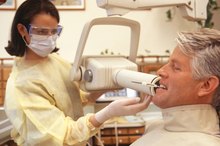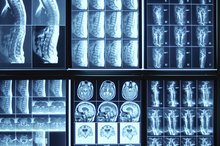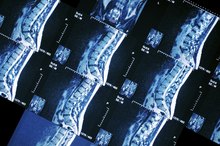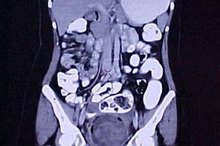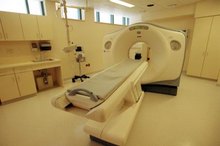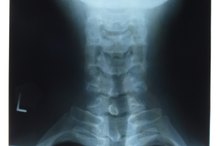Advantages & Disadvantages of a CAT Scan
CAT or CT scanning is a highly accurate medical test that combines x-ray with computerized technology. While this painless and noninvasive procedure greatly assists radiologists in diagnosing cardiovascular diseases, musculoskeletal problems, infectious diseases, trauma and certain types of cancer, the CAT scan also carries radiation-induced risks.
Comprehensiveness
The CAT scan can record images of bone, soft tissue and blood vessels simultaneously, offering clear advantages over standard x-rays. The CAT scans’ diagnostic ability can make surgical biopsy or exploratory surgery unnecessary. Its real-time imaging allows CAT scanning to be used to guide needle biopsies and similar procedures. A cardiologist can view clear 3D images of the coronary arteries without having to do an invasive angiography.
- The CAT scan can record images of bone, soft tissue and blood vessels simultaneously, offering clear advantages over standard x-rays.
- The CAT scans’ diagnostic ability can make surgical biopsy or exploratory surgery unnecessary.
Speed
Pros & Cons of X-Rays
Learn More
Most partial CAT scans take just seconds, and a full scan of the entire body can be completed in about a half-hour. This speed helps in finding internal injuries and internal bleeding quickly enough to help save lives.
Fewer Restrictions than MRI
CAT scans have a less stringent requirement for patients to remain absolutely motionless during the scan as compared to Magnetic Resonance Imaging (MRI) 2. CAT scans, unlike MRI, have no prohibition on implanted medical devices.
Concerns over Radiation
Advantages & Disadvantages of X-Rays
Learn More
Levels of radiation emitted by CAT scanners vary widely, leading to the possibility of lung cancer or breast cancer as a consequence. X-rays also damage DNA itself. Since the federal government has no regulations limiting how much radiation people may receive during CAT scans, the referring physician decides the strength of the dose.
Unsuitability for Pregnant Women
CAT scans are typically not recommended for pregnant women unless medically necessary because of potential risk to the baby. Women should let their doctor and scan technician know if there is any chance they are pregnant. Additionally, whether pregnant or not, women face a higher risk than men since radiation can damage their ovaries.
Dangers to Children
Nursing babies are potentially at risk from “contrast material” injected into their mothers before CAT scans -- a 24-hour waiting period is recommended before resuming breast-feeding. Children are also highly sensitive to radiation and so CAT scans should not be done on children without absolute need.
Related Articles
References
- American College of Radiology: Computed Tomography -- Body
- Circulation: Computed Tomography Scan and Magnetic Resonance Imaging
- Brenner DJ. Slowing the increase in the population dose resulting from CT scans. Radiat Res. 2010;174(6):809-15. doi:10.1667/RR1859.1
- Rubin GD. Computed tomography: revolutionizing the practice of medicine for 40 years. Radiology. 2014;273(2 Suppl):S45-74. doi:10.1148/radiol.14141356
- Hu SY, Hsieh MS, Lin MY, et al. Trends of CT utilisation in an emergency department in Taiwan: a 5-year retrospective study. BMJ Open. 2016;6(6):e010973. doi:10.1136/bmjopen-2015-010973
- Dean Deyle G. The role of MRI in musculoskeletal practice: a clinical perspective. J Man Manip Ther. 2011;19(3):152-61. doi:10.1179/2042618611Y.0000000009
- National Cancer Institute. Computed tomography (CT) scans and cancer. Updated August 14, 2019.
- Baysson H, Etard C, Brisse HJ, Bernier MO. Diagnostic radiation exposure in children and cancer risk: current knowledge and perspectives. Arch Pediatr. 2012;19(1):64-73. doi:10.1016/j.arcped.2011.10.023
- Bottinor W, Polkampally P, Jovin I. Adverse reactions to iodinated contrast media. Int J Angiol. 2013;22(3):149-54. doi:10.1055/s-0033-1348885
- American College of Obstetricians and Gynecologists. Guidelines for diagnostic imaging during pregnancy and lactation [ACOG committee opinion number 723]. October 2017.
- Pasternak JJ, Williamson EE. Clinical pharmacology, uses, and adverse reactions of iodinated contrast agents: a primer for the non-radiologist. Mayo Clin Proc. 2012;87(4):390-402. doi:10.1016/j.mayocp.2012.01.012
Writer Bio
David B. Ryan has been a professional writer since 1989. His work includes various books, articles for "The Plain Dealer" in Cleveland and essays for Oxford University Press. Ryan holds degrees from the University of Cincinnati and Indiana University and certifications in emergency management and health disaster response.
